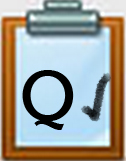Q3 Patterns: Introduction
Introduction
You’re making awesome progress on your problem-solving journey! After breaking a big problem into smaller parts (that’s decomposition), the next step is to look at the information you have and search for clues. This is called pattern recognition—basically, spotting things that repeat or stand out so you can use them to solve the problem.
Patterns are all around you! You can find them in math problems, science experiments, music beats, video games, artwork, nature (like zebra stripes or leaf shapes), and even in your favorite shows or stories. When you’re stuck, noticing a pattern is often the smartest shortcut to the solution.
Learning Objective
I can:
- Recognize patterns or trends in data.
A Cool Fact to Know
Do you know who Alan Turing is? He and Gordon Welchman, along with others, helped crack Hitler's Enigma Code in World War II. It is believed that it helped shorten the war by a couple of years. He and the rest of the team looked at patterns to solve the Code. Play the video below to learn how they cracked the code.
Discussion Question: What did you find interesting in the video? Be prepared to share your thoughts.
How Was Hitler's Enigma Machine Cracked?
Direct link (3:05 min.)
Competencies & Standards
MITECS Michigan Integrated Technology Competencies for Students, and
5. Computational Thinker
a. Students formulate problem definitions suited for technology-assisted methods such as data analysis, abstract models and algorithmic thinking in exploring and finding solutions.
b. Students collect data or identify relevant data sets, use digital tools to analyze them, and represent data in various ways to facilitate problem-solving and decision-making.
c. Students break problems into component parts, extract key information, and develop descriptive models to understand complex systems or facilitate problem-solving.
Websites and Documents
Websites
Videos from Outside Sources




